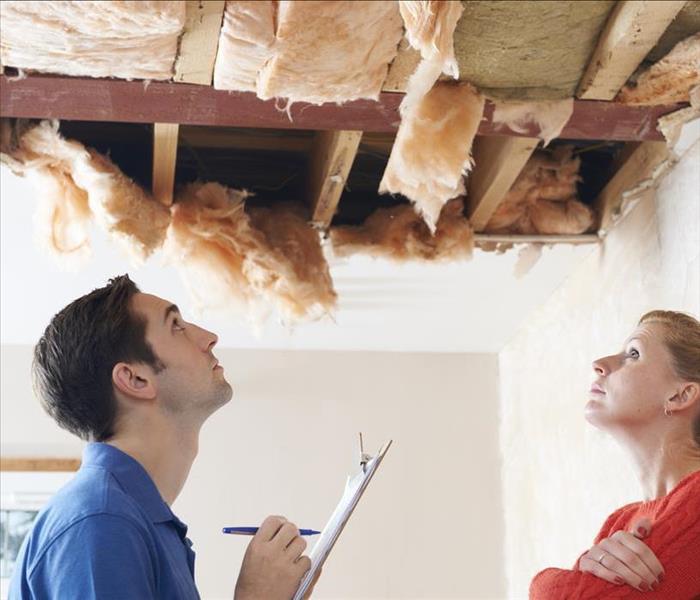Steps of the Roof Repair Process After a Storm
7/19/2022 (Permalink)
When a strong storm blows through Bountiful, UT, your roof and other areas of your home may get damaged. The exterior problems you see are probably not the only ones that the downpour and gusts left behind. It is in your best interest to make sure your home and roof repair get started right away.
The Roof Damage Repair Process
You may notice missing shingles or holes in your roof after a particularly heinous storm. Before you fix this problem, however, you should call storm damage mitigation experts to repair the issues that it caused inside your attic. The technicians board up the holes in your roof so that no further rain or wind damage occurs. Then they begin the interior remediation process.
1. Remove
Any portion of your attic that was touched by rain or debris may have damage. In addition to pumping out any standing water that is left behind, the mitigation specialists start cleanup by removing all materials that cannot be salvaged:
- Insulation
- Drywall
- Warped wood
- Carpet
- Floor pads
It is important to remove waterlogged materials promptly. Failure to do so can result in secondary damage such as rot or mold growth.
2. Clean
Your attic must be cleared of any dirt or debris that blew in with the storm. In most cases, technicians will also disinfect remaining surfaces to ensure that any bacteria from the rain are gone before roof repair gets started. This step also helps the team verify that no more ruined materials are present.
3. Dry
The way storms cause so much damage is by letting excess moisture into your home. Even if there is no standing water, the roof leak likely left things damp and increased the humidity. Prevention of further damage depends on the remediation team making sure all remaining surfaces are dry. Additionally, dehumidifiers can be used to bring the interior humidity back to an acceptable level.
4. Rebuild
Anything that was removed from your attic is probably something you want to replace. The rebuilding process involves not only installing new insulation, drywall and flooring but also making sure that the new materials match the remaining ones. By the time the restoration team is finished, you shouldn't be able to tell where the storm damage was.
5. Repair
After all the interior issues have been resolved, it's finally time to repair the roof damage caused by the storm. The roofing expert you hire starts by inspecting the roof to identify all the problems. If your insurance provider covers the cost of the damage, be sure to get an estimate before the work is started so that you can use it to document your claim. Fully repairing the roof is necessary to avoid further damage to your home.
Cleaning up after a storm is usually a multi-tiered process. If your house needs roof repair, you probably need to begin by fixing all the damage from the rain and wind that entered your home through its vulnerable spots. Once the mitigation inside your house is complete, then the roof can be fixed so that your attic is protected.






 24/7 Emergency Service
24/7 Emergency Service